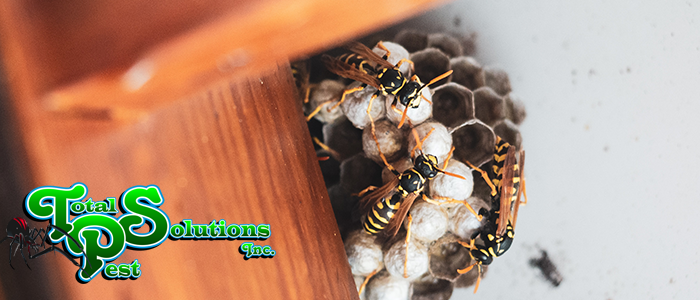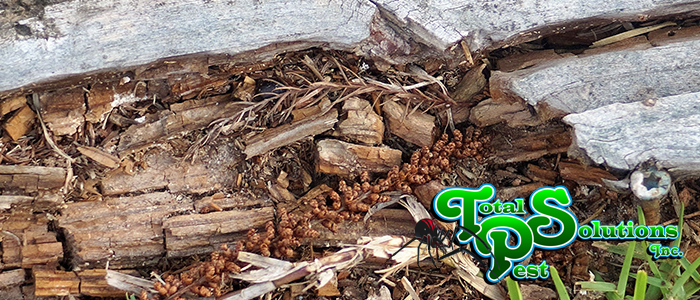
There are several different types of stinging insects, from wasps, to hornets, to bees. They all serve the important purpose of pollinating plants. But they also have a painful defense mechanism: they sting. While some are more likely to sting than others, and some are more dangerous than others, it is important to know which type is which to determine their threat level to you and your family and keep an eye out for stinging insect nests. It is especially important if you have someone in your household who is allergic to certain type of stinging insect as it can be life threatening. Read on to learn all about stinging insect nests.
Yellowjackets
There are several different types of yellowjackets, but they can typically be identified by their telltale yellow and black heads. They are most active in late summer and early fall, and they are attracted to sweets and proteins. This is why you will see them pay your backyard barbecue a visit. They have the ability to sting repeatedly in a single attack. They are also quite territorial, so if you see a nest, it is best to keep your distance. The nest is similar in appearance to a honeycomb or a paper carton. Their nests are built out of cellulose and can be either above or below ground. If above ground, their nests will most commonly be found under eaves or in attics where they can be protected from weather. Their underground nests can be difficult to spot as they most often have a very small entrance hole.
Hornets
Hornets are unique in that they will not reuse the same nest year after year, so every year the colony members will build a new nest. They are most active in the daylight hours of late summer. Hornets’ nests are papery and, unlike yellowjackets, will be constructed at least three feet off the ground. The nests are most often found in trees, shrubs, sheds, or under an overhang. The nest can be as big as 14 inches across and up to 24 inches in length. Another thing that distinguishes their nests from yellowjackets is that hornet nests are typically enclosed. Similar to yellowjackets, they can sting multiple times in a single attack, and they are quite territoriality aggressive. They also carry a venom in their stinger that causes pain, itching, and swelling at the site of the sting.
Mud Daubers
Mud Daubers or Dirt Daubers is a colloquial name for a type of wasp that uses mud to construct their nest. These insects feed on plant nectar and spiders. They are solitary, so there is not a large colony in the nest, though there may be multiple nests in close proximity if nesting conditions are right. As already stated, their nests are constructed out of mud, giving them a very distinct appearance. You will most often see a series of short or long tubes side by side in a somewhat sheltered area, such as under eaves or inside garages or sheds. These insects rarely sting. In fact, they are considered to be far less aggressive than other stinging species. However, they can sting if they are provoked.
continue reading
Related Posts
Holiday Pest-Free Homes in Winter Haven: Avoiding Cargo Pests As
Auburndale’s Mole Cricket Damage: Repairing Turf Before Frost As the
Lakeland’s Fall Termite Swarms: Early Detection Tips As the summer






